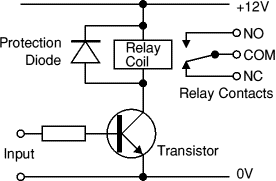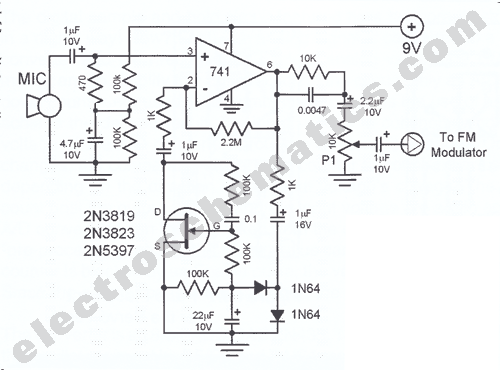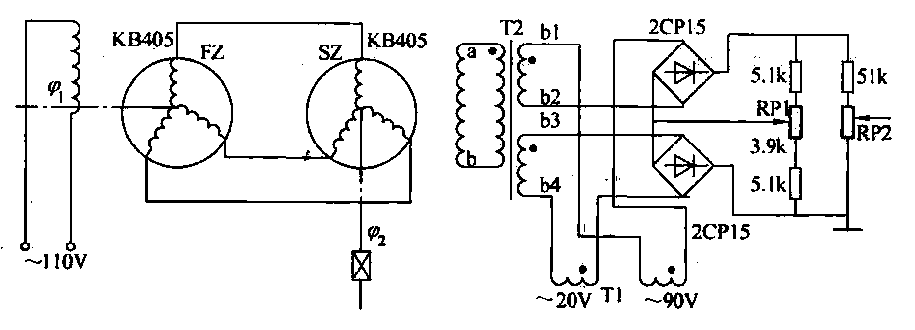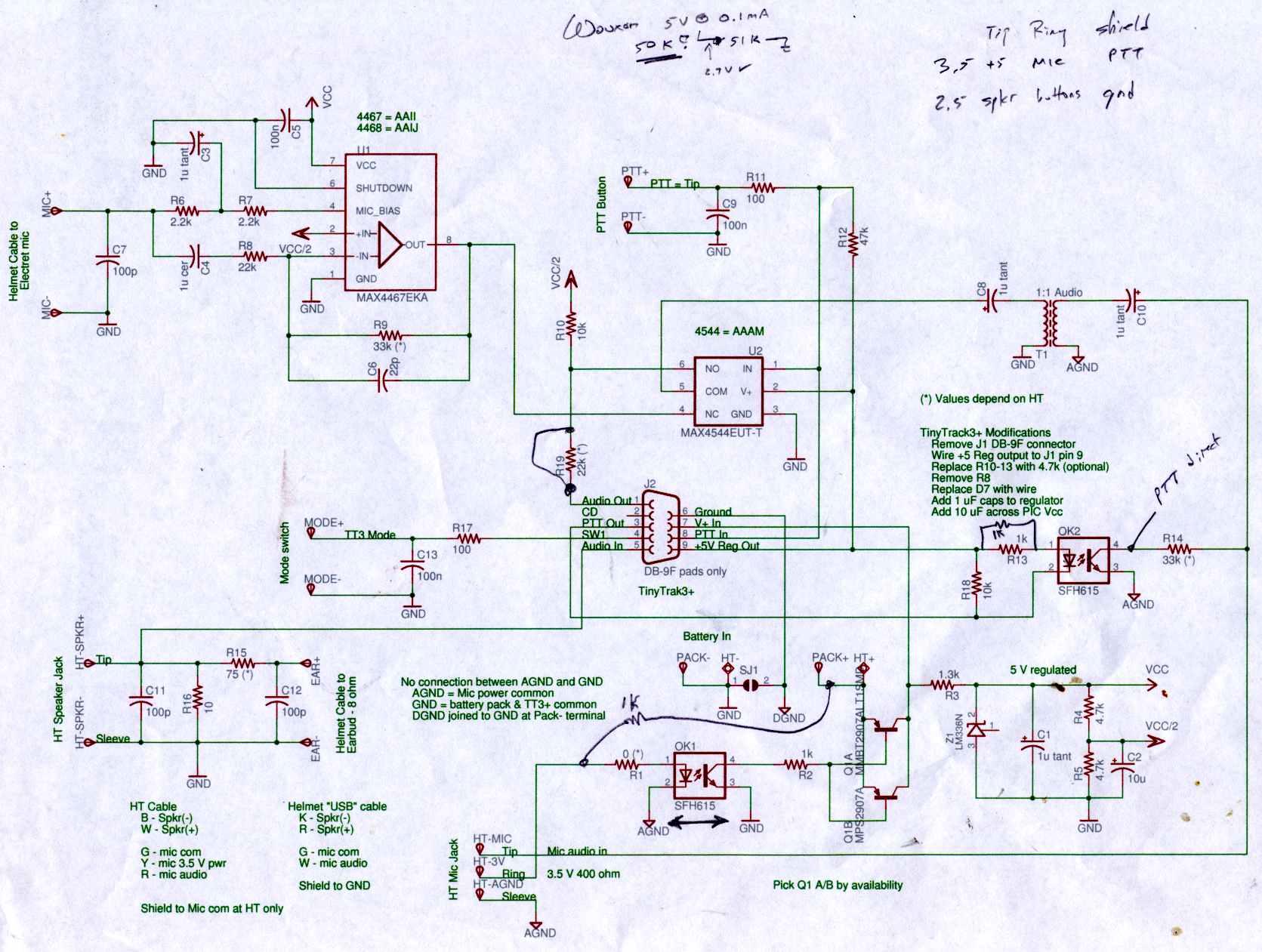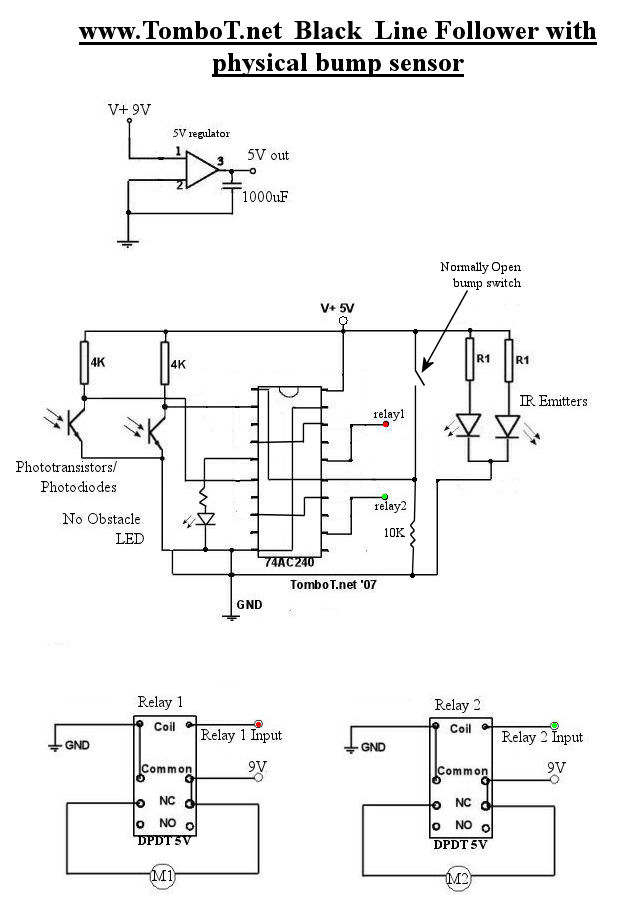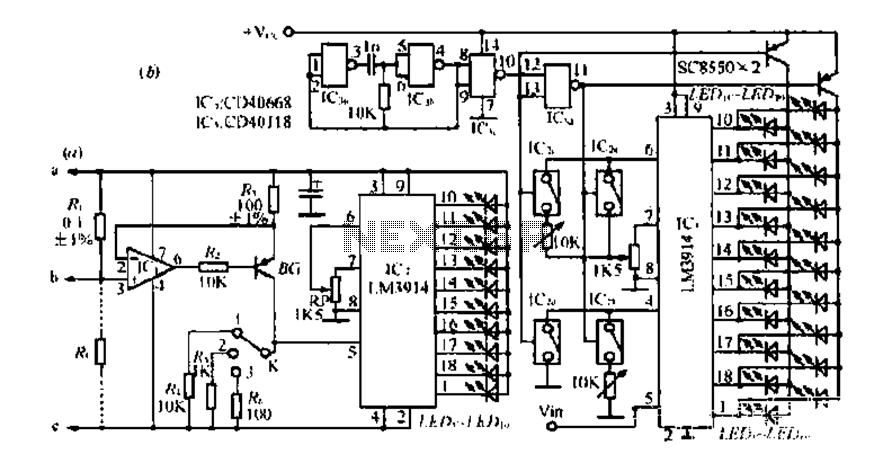
Magnetic field sensors circuit and serial interface application HMC1002
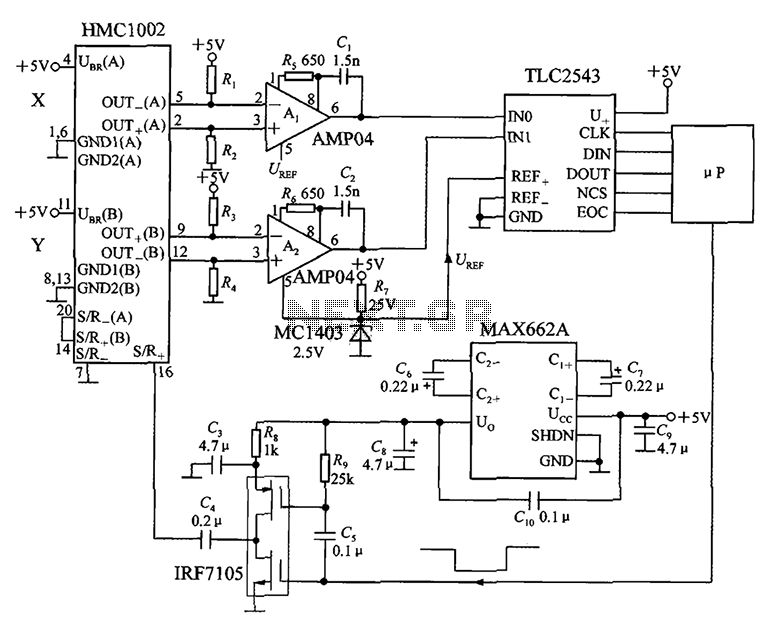
An application circuit for a biaxial magnetic field sensor is presented. This circuit utilizes the HMC1002 biaxial magnetic sensor along with two AMP04 amplifiers (A1, A2) to simultaneously measure magnetic fields in both the X-axis and Y-axis directions. The HMC1002 outputs two voltage signals, which are amplified by A1 and A2. These amplified signals are then fed into a 12-bit A/D converter, TLC2543, which connects through an interface circuit. The MAX662A serves as a highly efficient DC/DC converter, raising the power supply from +5V to +10V, which powers the IRF7105 driver. A pulse current driver provides input signals to the P terminal, with the output sent to the HMC1002 S/R+ terminal (pin 16). Tantalum capacitors should be utilized in the circuit.
The application circuit for the biaxial magnetic field sensor is designed to accurately capture and process magnetic field measurements in two dimensions. The HMC1002 sensor is the central component, capable of detecting magnetic fields along the X and Y axes. The integration of two AMP04 operational amplifiers allows for the amplification of the sensor's output signals, ensuring that the signals are strong enough for further processing.
The amplified signals from the AMP04 devices are directed to a 12-bit analog-to-digital converter (ADC), specifically the TLC2543. This ADC converts the analog voltage signals into digital data, which can then be processed by a microcontroller or other digital processing unit. The interface circuit ensures proper communication between the ADC and the processing unit, facilitating seamless data transfer.
Power management in the circuit is handled by the MAX662A DC/DC converter, which efficiently steps up the input voltage from +5V to +10V. This increased voltage is crucial for powering the IRF7105, a pulse current driver that is responsible for generating the necessary input signals for the HMC1002 sensor. The pulse current driver operates by sending specific signals to the sensor, which are essential for its operation and performance.
The design also emphasizes the importance of using tantalum capacitors in the circuit. These capacitors are known for their stability and reliability, making them suitable for applications requiring precise voltage regulation and filtering. Their inclusion in the circuit contributes to the overall performance and accuracy of the sensor system.
Overall, this application circuit offers a robust solution for measuring magnetic fields in two dimensions, utilizing advanced components and careful design considerations to achieve high performance and reliability in various applications.Application Circuit biaxial magnetic field sensor shown. Using a biaxial magnetic sensor HMC1002, two AMP04 (A1, A2), the magnetic field can simultaneously measure the X-axis d irection and the Y-axis direction. HMC1002 two voltage signals outputted respectively after A1 and A2 amplification, then the analog input and the reference terminal 12 bit A/D converter TLC2543, and then connected via the interface circuit P. MAX662A is a highly efficient DC/DC converter can be raised to + 5V power supply + 10V, as the drive power IRF7105.
Pulse current driver input signal from the P, the output is sent to the HMC1002 S/R + terminal (pin 16). Figure C3 tantalum capacitors should be used.
The application circuit for the biaxial magnetic field sensor is designed to accurately capture and process magnetic field measurements in two dimensions. The HMC1002 sensor is the central component, capable of detecting magnetic fields along the X and Y axes. The integration of two AMP04 operational amplifiers allows for the amplification of the sensor's output signals, ensuring that the signals are strong enough for further processing.
The amplified signals from the AMP04 devices are directed to a 12-bit analog-to-digital converter (ADC), specifically the TLC2543. This ADC converts the analog voltage signals into digital data, which can then be processed by a microcontroller or other digital processing unit. The interface circuit ensures proper communication between the ADC and the processing unit, facilitating seamless data transfer.
Power management in the circuit is handled by the MAX662A DC/DC converter, which efficiently steps up the input voltage from +5V to +10V. This increased voltage is crucial for powering the IRF7105, a pulse current driver that is responsible for generating the necessary input signals for the HMC1002 sensor. The pulse current driver operates by sending specific signals to the sensor, which are essential for its operation and performance.
The design also emphasizes the importance of using tantalum capacitors in the circuit. These capacitors are known for their stability and reliability, making them suitable for applications requiring precise voltage regulation and filtering. Their inclusion in the circuit contributes to the overall performance and accuracy of the sensor system.
Overall, this application circuit offers a robust solution for measuring magnetic fields in two dimensions, utilizing advanced components and careful design considerations to achieve high performance and reliability in various applications.Application Circuit biaxial magnetic field sensor shown. Using a biaxial magnetic sensor HMC1002, two AMP04 (A1, A2), the magnetic field can simultaneously measure the X-axis d irection and the Y-axis direction. HMC1002 two voltage signals outputted respectively after A1 and A2 amplification, then the analog input and the reference terminal 12 bit A/D converter TLC2543, and then connected via the interface circuit P. MAX662A is a highly efficient DC/DC converter can be raised to + 5V power supply + 10V, as the drive power IRF7105.
Pulse current driver input signal from the P, the output is sent to the HMC1002 S/R + terminal (pin 16). Figure C3 tantalum capacitors should be used.
